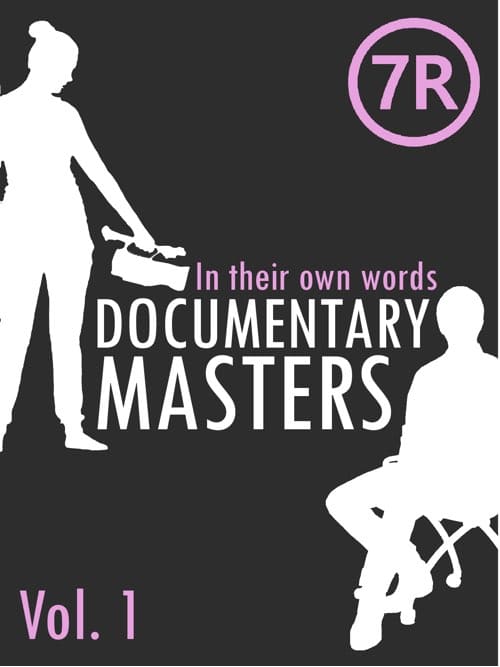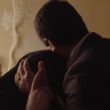Irene Lusztig discusses making Yours in Sisterhood, a documentary that allows for a respectful dialogue between different perspectives and feminisms.
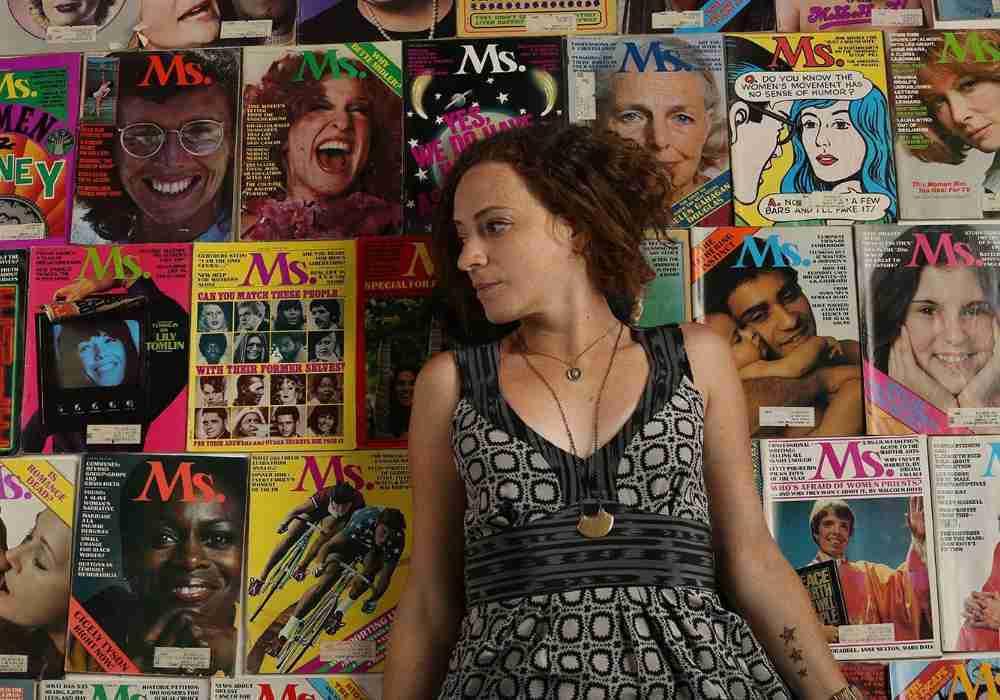
Premiering in Berlin this year, Irene Lusztig’s Yours in Sisterhood is a documentary with a deceptively simple concept: facing the camera, contemporary women from across the United States read letters that were sent to Ms. Magazine in the 1970s but never published. In these letters, readers from 40 years ago recount their experience with care. They describe the sexism they face, complain to the magazine for ignoring their perspective, or simply ask for help. With this simple setup, Lusztig draws our attention to both how different things are today and how much they’ve remained the same.
The film’s profoundly calming aesthetic — there is no music, camera movements, or any other distractions from what is being read — creates a rare space where we have the time and the patience to truly listen to the full stories of both the women who wrote the letters and the women reading them, on their own terms, and at their own tempo. Although they may disagree about their own definition of freedom and feminism, they read each other’s letters, and we find ourselves engaged in the same process of quiet, respectful consideration.
We talked to Irene Lusztig in Berlin about her curation process, the “timeliness” of the project, and creating a forum for different feminisms.
Seventh Row (7R): Could you tell me about the genesis of Yours in Sisterhood?
Irene Lusztig: I work a lot with archives, so most of my projects begin in some way with an archival collection, or a question about history — some kind of historical problem that feels resonant in the present. I knew about that particular collection of unpublished letters. It was in a library where I had done some work for a previous project, and I was curious about it. I’d also been thinking for a number of years, and across a few different projects, about the idea of feminist conversation, and about what kind of spaces we have for feminist conversation — what those spaces felt like in the 1970s and what they feel like now.
I’m also trying to think of ways of taking things out of the archive and inviting people to engage with them in the present in different ways. So the idea of having people read the letters felt like a very direct and simple way to invite people to engage with me in these questions.
[clickToTweet tweet=”‘I think history is always changing depending on where we are in the present.'” quote=”‘I think history is always changing depending on where we are in the present.'”]
7R: Why did you choose to make Yours in Sisterhood now?
Irene Lusztig: I had the idea for a long time. Actually, it’s very funny to have all these meetings with sales agents who tell me that the film is “so timely!” It’s amazing for the project, and it’s exciting to be finishing it in a moment where a lot of people are thinking and talking about feminism. But it’s also very ironic, because the film is really making an argument about how long this has been going on, how much unfinished business there is, and how many things haven’t changed in 40 years. It’s not a new idea for me, and it’s not a film that I designed to make in a moment where feminism is kind of coming back or becoming more public.
In fact, the film really came out of a lot of frustration — feeling like we don’t have good spaces for public feminism in the U.S. now, and that a lot of these histories, that feel very important to me, seem very invisible or forgotten now. A lot of the work of the film has been to recuperate, bring back, or reanimate histories that I felt weren’t being talked about enough. But then, of course, I’ve been making the film alongside the 2016 election. Already in 2016, the second year of shooting, it felt like there was this growing momentum around speaking about women’s issues and feminism. There’s been a real energy. And that’s been surprising and good for the project, but not what I expected at the beginning of working on it, where I thought my film would be quite obscure!
7R: Did you know about the magazine before working on Yours in Sisterhood?
Irene Lusztig: Yes, the magazine was very well-known in the US, for a time. People my age, in their forties or older, usually know about it, but younger people might not — I find that my students have never heard of it. It was launched in 1972, and through the 1980s, it was an incredibly mainstream publication. Although it was founded by second-wave feminists, and was very much a feminist magazine writing about women’s issues, it was not at all a marginal publication. In the 1970s and ‘80s, you could find it in drugstores, supermarkets, newstands. It circulated all over the US. It was very well-known and a very significant publication because of that. I don’t think there’s an equivalent of that in the US today.
Then, in the late ‘80s/early ‘90s, it became a non-profit. The publication received a lot of angry letters from readers complaining about the types of advertising that were in the magazine. These ads were considered sexist, promoting makeup, or razors to shave your legs… So the magazine quit all of its advertising and became a non-profit. As a result, it became smaller. It was published only four times a years, and it didn’t have this impact as a feminist publication the way it did when it was widely circulated. But that’s a common thing… So much of feminist history gets erased over time. That’s part of a bigger phenomenon.
Interested in interviews with doc filmmakers? Pick up our Documentary Masters eBook now, and read what some of the best in the business have to say about their craft.
7R: Did you contact Ms. Magazine for Yours in Sisterhood?
Irene Lusztig: I didn’t contact them until it was finished. In the U.S., I think 70s feminism is now remembered as very white and very middle-class, and I think that’s complicated. Part of that is true, and definitely, feminist conversation around inclusion and race is in a really different place now than it was in the 1970s.
But I also think a lot of stuff that ‘70s feminism did is a little forgotten and misremembered. Because of that, there’s even a complicated politics around making a project about 70s feminism. And it felt important to me, while I was making the film, that I was just myself and not working for someone else — that I didn’t recognise or represent any particular feminist politics, group, or organisation. People asked me these questions a lot when I was shooting, which has never happened to me: “who’s funding your film?” “Do you work for Ms.?”
Certainly, a lot of African-American women didn’t read Ms., or felt like Ms. wasn’t a publication that spoke to them, and they would have felt differently about being in my project if I was making it for Ms. or in collaboration with Ms.
Transgender people have a complicated history with second wave feminism in the U.S., where they often felt not invited to be part of the feminist places in the 1970s. So I had long conversations with transgender readers about what my politics were and what it meant to me to make a film about ‘70s feminism, why I was inviting a transgender person to read. All of that also mattered. So I waited to contact Ms. partly to feel like I was working in a free way with people.
[clickToTweet tweet=”‘You can make feel-good, nostalgic films about ‘70s feminism, but I definitely didn’t want to make a comfortable film like that.'” quote=”‘You can make feel-good, nostalgic films about ‘70s feminism, but I definitely didn’t want to make a comfortable film like that.'”]
7R: How did you select the letters that appear in Yours in Sisterhood?
Irene Lusztig: I read a lot of them — probably 2000. I read every day for four weeks. I would just go to the library and read all day. Then, I made a shorter selection of letters I thought it would be interesting to shoot for the project. It was still 800 letters. I selected both letters that felt typical — many letters were about the same issue, so I picked some that would be good examples of that type of letter — and letters which felt extraordinary and unique. Some of those are in the film. For example, I only found one letter out of these 2000 that was from a sex worker, who was describing her work.
7R: And it wasn’t published!
Irene Lusztig: It wasn’t published, so that letter felt atypical yet super important. The film ends with a letter from a woman who’s in prison — there are a few prison letters, but mostly not by women. That was the only letter from an incarcerated woman that actually speaks about being a woman in prison.
I was also doing a very contemporary curation, thinking about what felt important to me for feminism now. I was definitely prioritising letters from women of colour, from transgender readers — which there were very few of in the archive, maybe four or five.
7R: Were there many letters from women of colour in the archive?
Irene Lusztig:. There weren’t many letters from women who were identifying themselves as women of colour, or who were trying to think of feminism and race together. I shot almost all the ones I found. They constitute a much bigger percentage of my movie than they do of the archive.
I knew I wanted to film all over the US, so I made sure that I had letters from all over the country. When I was planning trips to shoot, I would go back and re-read all the letters region by region. At different moments, different letters would seem more important. For example, there’s this letter from North Carolina, from a woman who’s in an interracial relationship. She talks about the presence of the KKK and the Nazi Party in North Carolina. The first time I read that letter, it just seemed very specific and not that significant. When I reread it after the election, there was this very public resurgence of right-wing activity in the US, so the letter suddenly felt very resonant and haunting. I think history is always changing depending on where we are in the present.
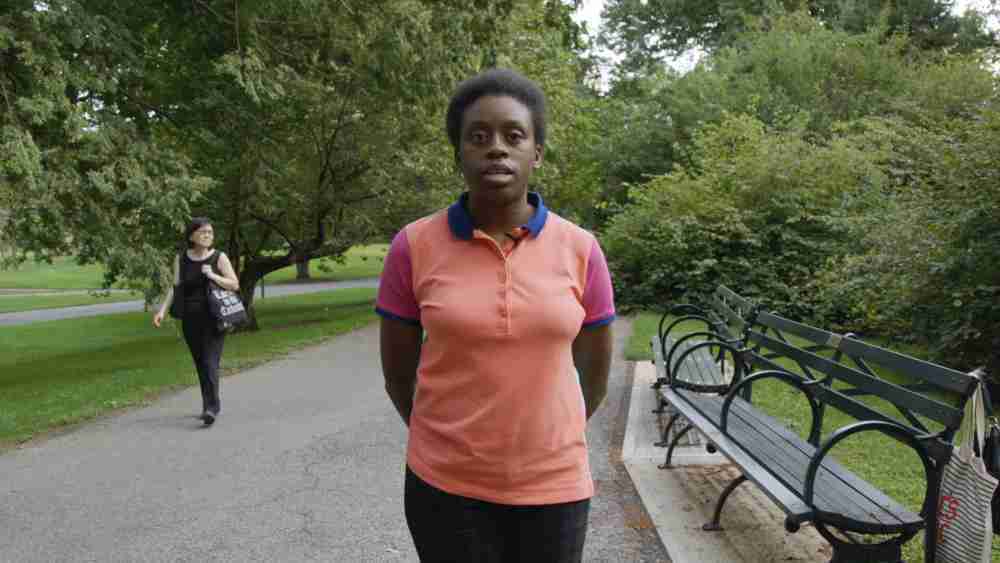
7R: We often perceive feminism in the 1970s as unified behind a set of clear goals, certainly compared to feminism today. I was struck by how Yours in Sisterhood showed that there wasn’t actually that much unity: every single person had a different opinion. Did you ever have an impulse to show a more unified feminism?
Irene Lusztig: As a filmmaker, I’m always interested in complexity. You can make feel-good, nostalgic films about ‘70s feminism, but I definitely didn’t want to make a comfortable film like that. The idea of the project is to make a maybe messy and complicated space that invites people to listen to all of those possible feminisms together, a kind of space that invites you to think across all of those different perspectives. I don’t want to tell you what feminism is.
At the heart of the film is a politics around listening — the ethics of listening, and the idea of listening across differences. The idea of feminisms rather than feminism felt very important to me. I wanted to make a space that could also include quite conservative women, like the woman in the gun range, or the factory worker in West Virginia — feminism for her is about getting a certain kind of job in a factory, and that’s quite different from what a woman of colour in the Bronx might have to say about race and feminism.
The woman in West Virginia, working at the factory: I think she’s a woman who’s quite active in union politics, and she’s a person who’s certainly interested in women in the workplace and women’s rights in the context of what kind of factory job you have, how much it pays, and the working conditions. I think it’s important to acknowledge that this is also a feminist politics, even though she isn’t able to identity with the woman whose letter she’s read. It shows the limitations of these feminisms — there are blind spots, things we can or cannot see across depending on where we’re standing and our life experiences. Something interesting happened in that reading, and it didn’t happen that often. She’s quite hard on the woman whose letter she reads, saying “she didn’t have any ambition,” “she could have gotten a job in the factory if she really wanted a job.”
There were a lot of disagreements among the people who wrote letters in the 1970s, especially about whether the magazine was radical enough or not. There were readers who were angry at the magazine for writing about lesbians or about LGBTQ issues, kind of saying, “We think feminism means equal pay and having the same kind of jobs as men, but we don’t want to read about lesbians because that’s not what feminism is for.” On the other side, you had much more radical people accusing the magazine of being bourgeois. But I think conflict and disagreement are as important to me as empathy and identification. I don’t think there was one single feminism in the 70s, either.
7R: You ask some of the people reading the letters to say what they think about them, which adds another level of disagreement or agreement to what is being read. How did you choose who would read which letter?
Irene Lusztig: I filmed 306 people for the project, so when it came to editing the film, I picked the readings where I thought something interesting or transformative had happened. But the ways that I associated people with the letters were quite precise. It wasn’t always about matching people exactly, but about creating some kind of resonance, or even some sort of conflict. I was thinking differently for each letter about who might read it, and what may happen. Sometimes nothing would happen, and sometimes I would be totally surprised by what someone would find or respond to in a letter.
For example, there’s a letter from the archive that was from a lesbian reader — quite a short letter criticising the magazine for not having enough content for lesbian readers. It was about representation and about feeling marginalised. There’s more mainstream representation for queer women now, so I didn’t ask a lesbian woman to read the letter, but a transgender man who was also deaf — thus speaking from a more contemporary space, where he was thinking about disability and transgender issues. I thought that was an interesting way of getting at that idea of not feeling represented, or feeling marginalised.
When I first imagined the project, I thought that the first time the person would read the letter would be the most interesting — before they had the time to think about it. But actually, what I found in shooting was that people needed three or four takes to get used to reading from a teleprompter and get used to the setup. It was often at the third or fourth time that I would feel something was happening in that person as they were reading. So I think there is something about simply repeating something, putting someone’s words into your body enough times that you start to actually feel different.
[clickToTweet tweet=”‘I think conflict and disagreement are as important to me as empathy and identification.'” quote=”‘I think conflict and disagreement are as important to me as empathy and identification.'”]
7R: It’s striking to hear about these Ms. Magazine readers actually reaching out to communicate with each other. Do you feel like this sort of communication is even a part of any mainstream feminism today?
Irene Lusztig: It’s really different now, and I’m very interested in that difference. Even beginning with what the act of writing a letter means — it takes a lot of care, labour, and time. In the archive, even looking at the materiality of what those letters look and feel like — people wrote on beautiful stationery, sometimes there are drawings on them, some people are handwriting, others using a typewriter… You can really feel the time and care that it took to sit down and write a letter to a magazine, and then, the time and care it took the editors to read all of the letters.
Actually, until 1975, the editors would write a letter back to every person who wrote, even if they didn’t publish their letter. There’s this incredible space of just paying attention, and listening, and reading carefully. All of that feels really important. And I think the spaces we have now are quite different. We talk to each other on the internet, and our communities of conversation are much more fragmented and isolated. In the U.S., that’s the thing everyone has been talking about since the election — our diminished capacity to listen to each other across socio-economic and geographical differences.
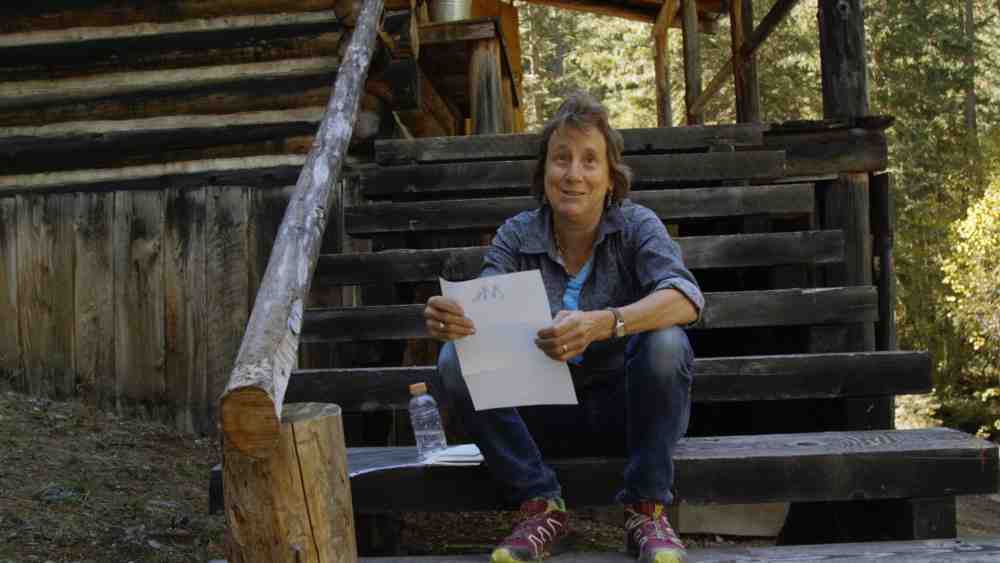
And when you make a comment on an Internet message board, you can reach a very big audience very quickly, but it’s also very ephemeral, and what you say can get buried under other comments. You don’t have to think as hard, you don’t have to spend a lot of time writing it, you don’t have to spend a lot of time reading it. So I think there is something maybe impoverished about the space that we have right now for speaking to each other.
That’s why it felt very important that I go to those places myself, that I meet everyone myself, that I write to everyone myself — I didn’t have a casting director or a producer communicating with people for me. Affording the care and the time of going to a small town in West Virginia or Ohio and spending an hour with someone, talking to them before, during, and after the shoot. Making a space where slow listening and attention can happen felt very different from the way that we usually talk to each other now.
7R: Women talk this way on Twitter now…
Irene Lusztig: That’s the thing: there are many, many spaces now, including for feminist conversations, but it’s a much more fragmented landscape. People are in much more specific groups, with like-minded people. What was interesting about Ms. was that it was read by people from so many different places and with really different experiences. It was a space for people to come together, and the letters feel like a space where people could communicate across very big geographical, ideological, and racial differences.
7R: Watching Yours in Sisterhood, it feels like there isn’t that much emphasis on the big cities, which I imagine were in fact the places where most of the letters came from.
Irene Lusztig: I probably over-represent the middle of the country. Statistically, a majority of the letters were from New York and California. Those were the two states, with Massachusetts and Washington D.C. just behind. Ms. was based in NYC. I do have one reading from NYC in the film.
But yes, when you watch the film, it does feel like it spends more time in other parts of the country. Especially during the [2016] election, and after the election, it became so obvious that we’re not good at listening to each other in the U.S., and that the issues and concerns of people in different parts of the country are really, really different.
I could feel that in the archive also, actually. For the first day or two when reading the letters, I thought I would do the whole project on a big city like New York. But pretty quickly, as I was reading, I felt like for someone in a very small town in the midwest, who has no other access to feminist media, and just finds this magazine in a store or something, what this encounter with Ms. means may be a lot more significant than what it might mean for someone who has access to lots of feminist organisations, lots of different groups and lots of publications. So I wanted to include both of those things.
I think that a lot of people seeing the film have a strong response to just how empty it looks. Public spaces are very empty in the U.S. That’s just an American thing. We’re bad at public space, we’re just not interested in it.
7R: What is your next project?
Irene Lusztig: The next thing I want to do is an archive internet project that would be the second part of Yours in Sisterhood and would include a lot more of the readings. When I was reading the letters and during shooting, I thought so much about how to make this really inclusive, big space, with all these different kinds of people talking to each other.
But I was also thinking about how to make it a feature film that anyone would watch, and that would be only 100 minutes long. A feature film allowed me to truly create a quiet and still space where viewers would really take the time to listen — something that is virtually impossible to do online, because people are really bad viewers on the Internet and don’t watch things for a long time.
But I had to cut so many people out for the film. It’s a very curated selection of 27 videos out of 306. And each time I made the decision to take someone out, I felt very aware of silencing this person — of maybe reproducing the problem of the magazine that just published ten letters out of a hundred. It feels important to me to also make a space where more of these readings can be seen.
Interviews with female directors have their own button on our website: you can find them all here. Among the films we’ve covered, Yours in Sisterhood is unique for the way it addresses several, conflicting ideas of feminism. In a way, our website does the same thing, and we have published many articles articulating wildly contrasting ideas of equality. For the young girls of We Are The Best!, it means having their own punk band. In 24 Weeks, it is also the right to have an abortion. In the Palestine of documentary The Judge, it starts with having women in positions of power. The more pessimistic Gone Girl makes a disturbingly convincing argument for conning your way into power, while Big Little Lies and Elle emphasise the importance of female friendship and support.
